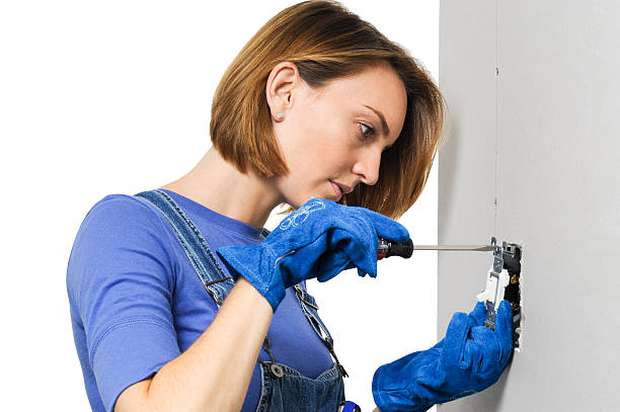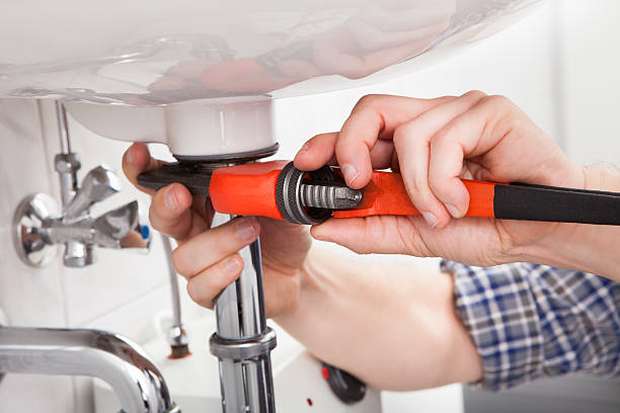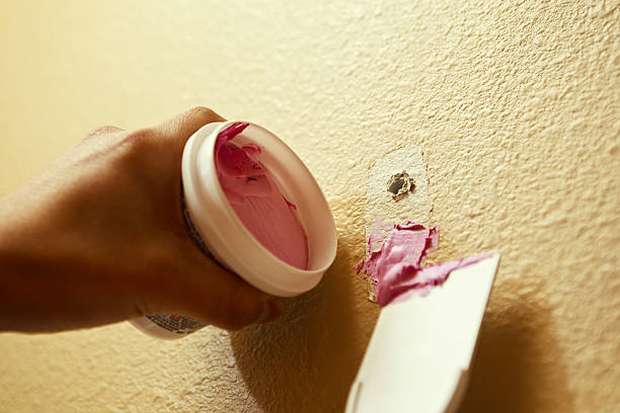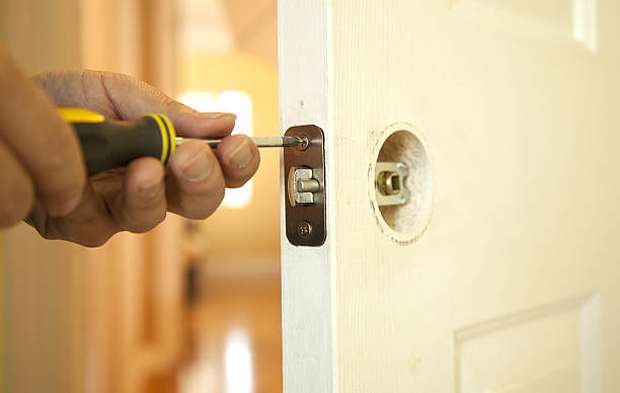Accidents happen all the time. Things in the house get broken, blocked, or just stop working altogether. It is unfortunate, but it should not mean you have to spend your hard-earned money every time something breaks. Of course, repairs that are more serious should be left to the professionals, but there is no reason why you could not easily sort out some of the most common problems by yourself. Here is a list of the things most likely to break around the house, and how you can save a lot of money by fixing them yourself.
Light Switches
Electricity is an example of something best left to an electrician if, for no other reason, than to prevent the risk of serious injury. However, light switches are something that you can easily fix and replace yourself.

If a switch is not working properly, the first thing you must do is make sure the circuit breaker is turned off. Using a flathead screwdriver, remove the faceplate covering the switch, and then use a voltage tester to make doubly sure the circuit is not active.
Next, use a Philips head screwdriver to pull the switch off the wall. You will see two wires still attached to the switch. Disconnect the wires, one at a time, and attach them to the corresponding location on the new switch. Now, simply put everything back together. For a more comprehensive guide with pictures, check out this link: www.handymanknowhow.co.uk/electrics/replacing%20light%20switches.htm
Plumbing
Problems with the pipes can cover a range of issues. Blocked drains, clogged toilets, and leaky faucets are the most common breakdowns and the most easy to sort out with very little experience.
When a blockage occurs, your first solution should be a plunger. In the image below, the brown plunger is for sinks, and the black one is for the toilet. Make sure you are using the right tool for the right job.

For toilet clogs, make sure there is enough water in bowl, or pour in enough water to submerge the head of the plunger. Give between eight and ten good downward thrusts; this should be enough to sort out minor repairs. If not, it is time to get out the auger snake. Run the auger into the toilet until it finds the clog, and then start turning the crank. With a good grip, you should be able to pull the clog right out. The same method should work on the kitchen and bathroom sinks.
The second most common problem occurs when the drain under the sink is blocked. To fix this, the first thing you must do is turn off the water valve – this will either be next to the sink or in the basement depending on what kind of house you have.
Then, place a bucket under the pipe and twist off the compression nuts. The curved pipe should easily come off at this point, and this is usually where the clog has settled. Clean it out, replace it, screw the nuts back in, and turn the water back on. Simple.
Finally, repairing a leaky faucet is also something you can do on your own. Before you turn the water valve back on, use a flathead screwdriver to remove any decorative parts of the tap. Underneath each knob, a screw secures the handle to the stem. Unscrew, and then gently remove the handle with your flat head. Loosen it using WD40 or other penetrating oil, and then you will be able to take the faucet handle off the stem. Use your wrench to loosen the packing nut. From there you should notice the stem. Remove that as well. Depending on the faucet, some stems pop right off, while others twist off from the valve. Check the removed parts for any damage. If everything is intact at this point, inspect the O-ring and washer inside the valve seat—they could be the reason for your leak. Remove the washer and put a replacement inside the seat.
Again, some plumbing issues should be left to the professionals. Contact http://www.plumberlanecove.com.au/ for plumbing issues that are above your pay-grade.
Patch Up a Hole in the Drywall
You would hope that this kind of damage will never happen in your home, but unless you have made the hole with a sledgehammer, even big holes should be an easy fix.

The simplest holes to fix are the ones caused by hanging frames or TVs on the walls. For holes like these, you should first clear the area of any debris and wipe down the wall. Use a putty knife to press some spackle into the wall and let it dry. Once it is done, sand it down with fine grain sandpaper until it is nice and flat. Depending on how seamless you need it to be and what color you your walls are, you may need to apply a coat of paint.
Larger holes can be a bit trickier. If a doorknob or fist went through the wall, you will need to cut out a rectangular section of the drywall surrounding the hole. Then, cut a piece of drywall from some scraps (or whole pieces you can buy at a hardware store). You can also use a small piece of wood to brace the scrap drywall in the hole by placing it inside the wall and drilling screws into it above and below the hole, then add a third screw into the drywall patch, and add some drywall tape around the seams. Finish it off by slathering on some joint compound and using a large putty knife to scrape it down until it is mostly flat. As with the smaller holes, finish off by sanding it down until it is smooth. For more tips on how to fix a hole in the drywall, visit www.wikihow.com/Repair-Holes-in-Drywall.
Door Maintenance
Squeaky and stiff doors can easily be fixed with WD40, but doors still need some regular maintenance, especially when the seasons change. In humid weather, wooden doors can swell if there is not enough room to accommodate expansion between the door and the frame. Inspect the door for any loose hinge screws or deteriorated hinges that could be causing the problem. Tighten loose screws by first placing a door wedge on the latch end of the door to balance the weight. If the screws look okay, but the door meets resistance when it closes, make a note of the tight spots. If a door starts sticking only during humid months or during the rainy season, it may need to be planed. Before you take this step, though, consider the fact that in a few months the problem may go away by itself. Visit www.wikihow.com/Plane-a-Door for a step-by-step guide on planing a door.
The door you most need to worry about, however, is the one that gets the most exposure to the elements. If you have a wooden front door, it needs to be regularly checked for cracks, environmental moisture, and intense sunlight, which will cause the finish to fade. It will not be as simple as other home repairs, but you should also be able to fix any of these issues yourself. www.doityourself.com/stry/exterior-wood-doors-maintenance-and-care will walk you through the process.

Rewiring a light plug
Everyone should learn how to do this. Not only is it a super easy repair, it will save you the cost of buying a new lamp, and maybe more if that lamp is part of a set. If you have just put in a new bulb and found that the lamp still is not working, the socket probably just needs a new fuse, which you can find at most supermarkets and are not very expensive. Make a note of what kind of charge you need to buy from the store, and then all you need is a screwdriver – Philips or flathead depending on what kind of screws are holding the socket together. Then simply unscrew the socket, switch out the old fuse for the new one, put it all back together, and you are done. So simple, you could do it in your sleep.
Squeaky floor panels
With just a simple touch of talcum powder, you can say goodbye to the squeaky floorboard that always betrays you when you just want to get a glass of water in the middle of the night. Just sprinkle the powder on the offending area, sweep it into the cracks, and the noise should stop soon after. Be sure to remove all traces of the powder if you are planning to refinish the floor one day.
Peeling Wallpaper
No matter how firmly you pressed on it when you first put it up, the wallpaper will inevitably start peeling. To fix this, take a small knife and rub wallpaper paste onto a spare piece of paper. Rub the paper on the underside of the section that is peeling off. Press the wallpaper firmly against the wall, slide out the spare piece of paper, and the smooth out the bubbles.

